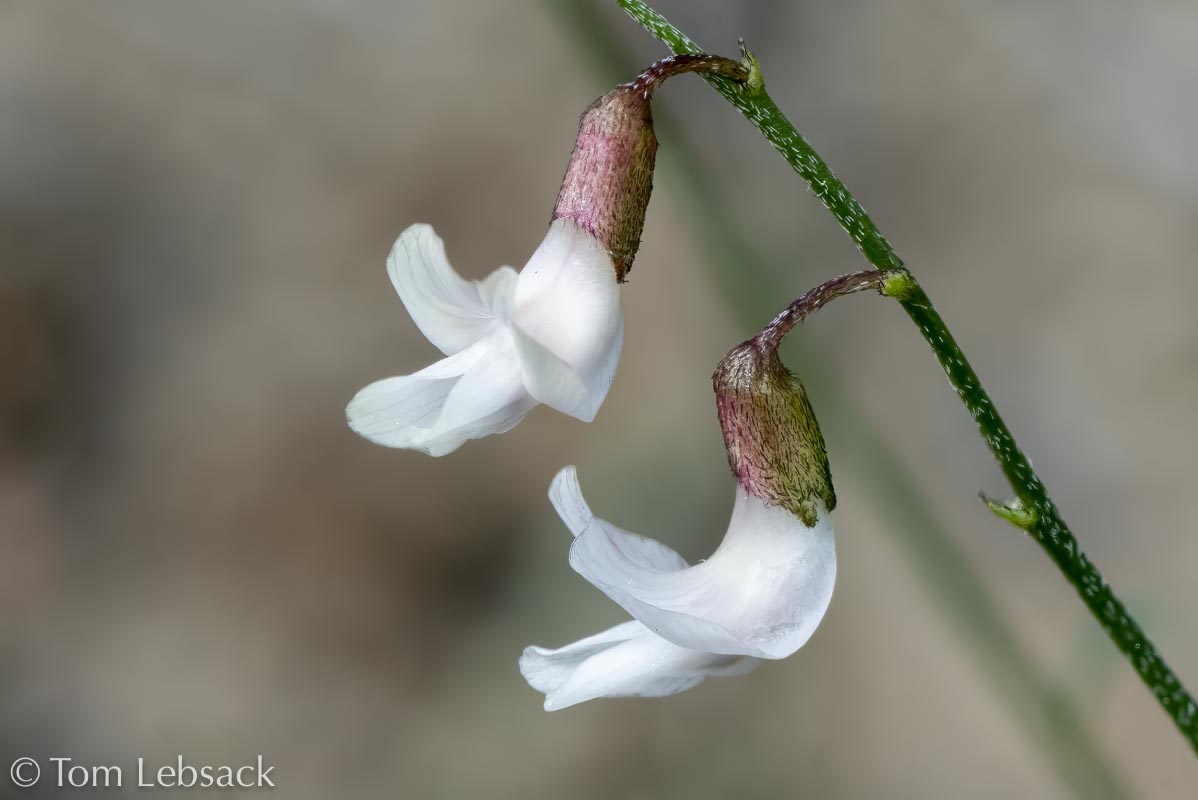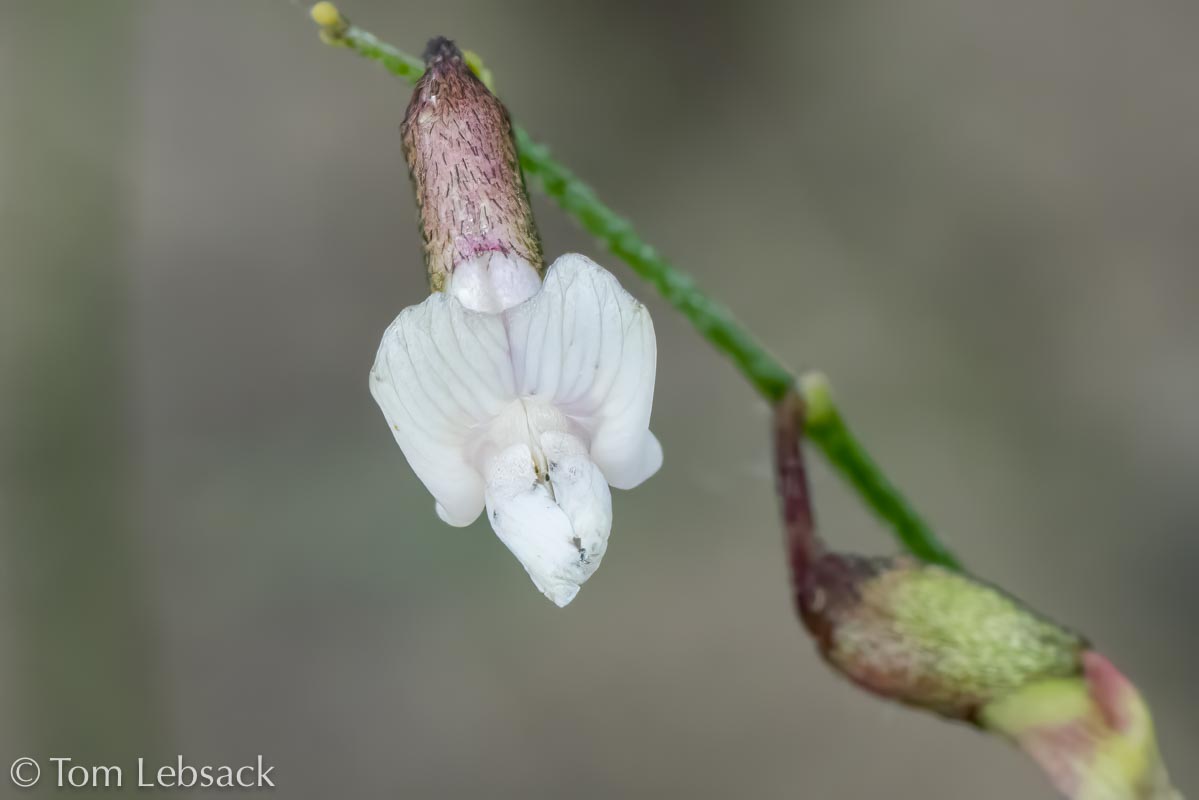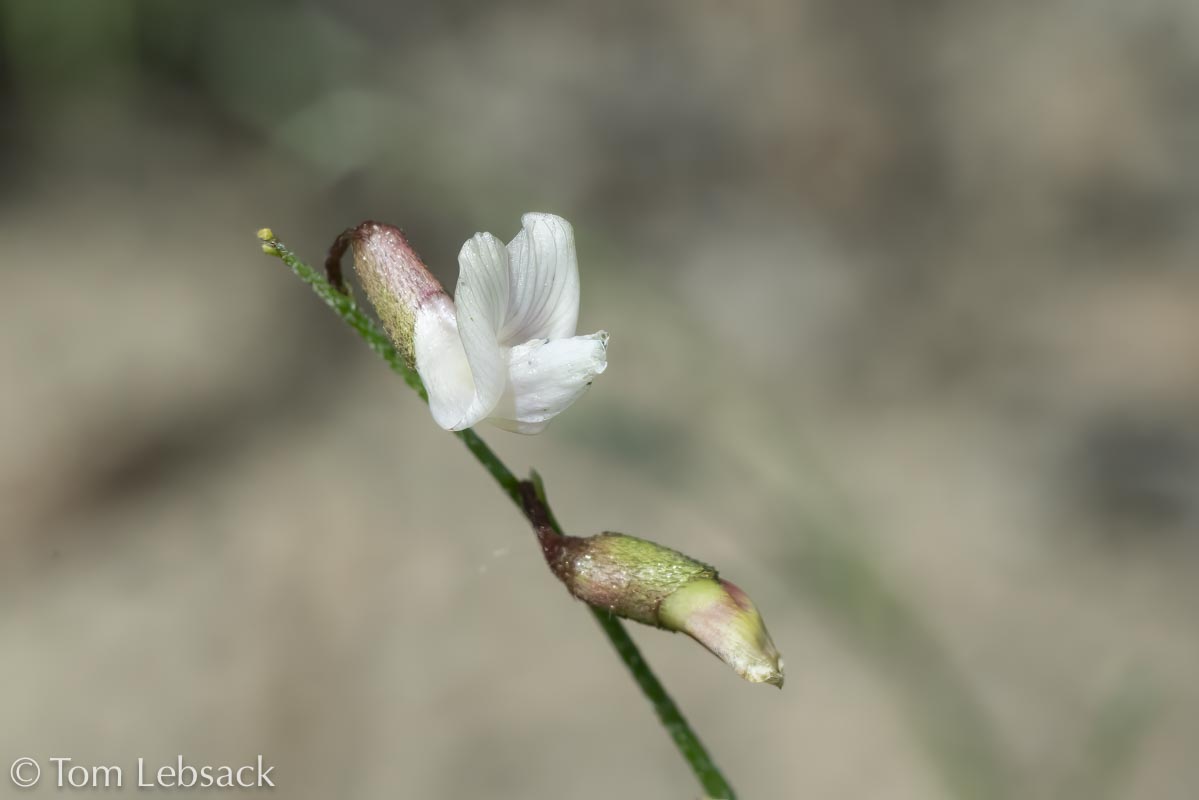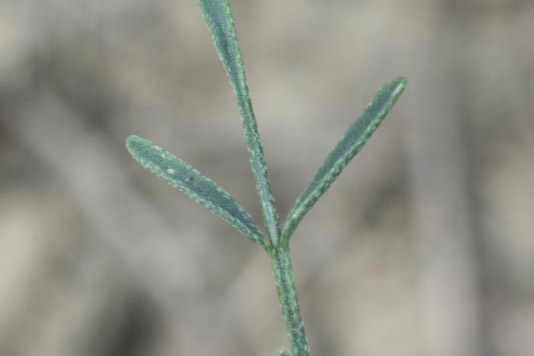Astragalus convallarius
(Lesser Rushy Milkvetch)
| Scientific Name | Astragalus convallarius | USDA PLANTS Symbol | ASCO12 |
| Common Name | Lesser Rushy Milkvetch, Timber Milkvetch | ITIS Taxonomic Serial No. | 25477 |
| Family | Fabaceae (Pea) | SEINet Reference |
Click Here |
| Description |
Life zones and habitat: Plains to montane (4700 to 9200 ft); dry soils in open areas, shale slopes, hillsides and grasslands; often associated with conifers and sagebrush. Plant: Slender perennial with 1 to 6 erect to spreading stems up to 20 inches tall; foliage in lower portion of plant is somewhat hairy, smooth in upper portion. Leaves: Simple or pinnately-compound leaves with up to 13 leaflets 3/4 to 4 inches long that are narrow, threadlike or linear with upward-curling edges. Inflorescence: Stalks 3/4 to 3-1/2 inches long arising from upper leaf axils with scattered small pea-like flowers; blossoms are white to yellowish and purple-veined or possibly purple; upward-bent banner is 1/4 to nearly 1/2-inch long; calyx is less than 1/4-inch long and sparsely covered with white or black hairs. Bloom Period: June to August. Fruit: Green or purple-mottled pods, narrowly oblong or oblanceolate and 1/2 to 2 inches long. Reference: "Flora of Colorado" by Jennifer Ackerfield and Montana Field Guide. |
BONAP Distribution Map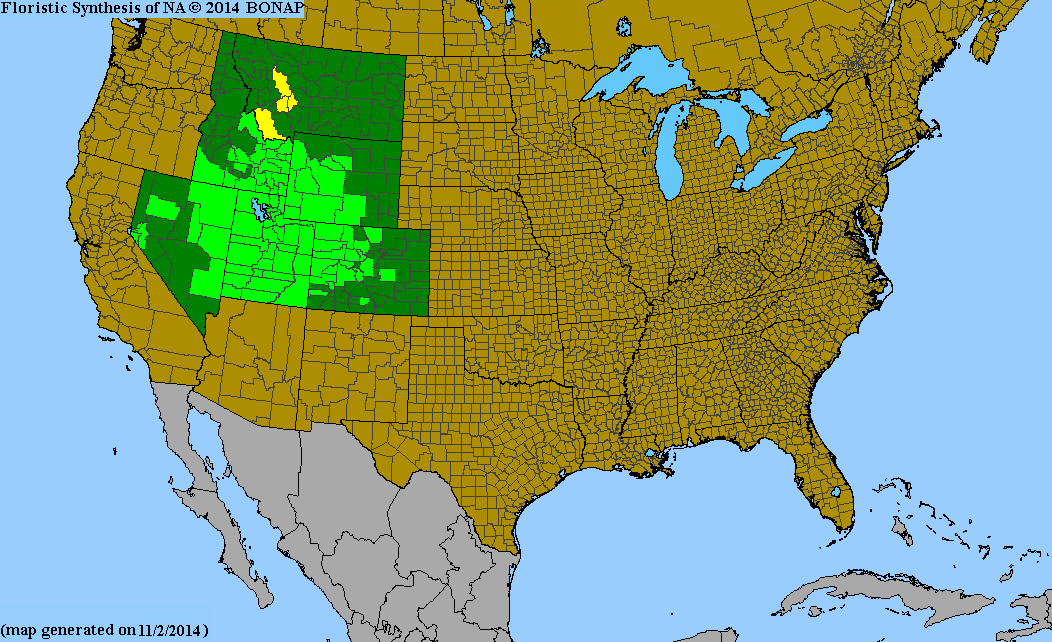
Map Color Key |
Colorado Status: Native |
© Tom Lebsack 2025
Banner photo: Castilleja rhexifolia and a brewing storm over the San Juan Mountains
I try to provide accurate, up-to-date, and relevant information, but cannot guarantee the completeness or accuracy of any information presented on this website. I use authoritative references to insure high standards of accuracy and review and update the information frequently.
